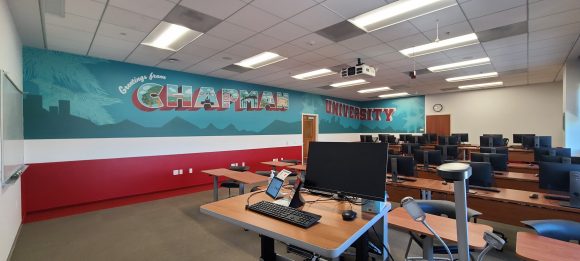
Where Learning Happens Some ideas about updating classrooms on our campus
November 4, 2022
Recently I had the pleasure of traveling to Portugal and visiting one of the world’s most beautiful libraries, the Joanina Library at the University of Coimbra. Of course I was enthralled by the grandeur of the space and the promise of knowledge housed within the covers of its impressive antique book collections. I was also awed by the remarkable view from the library’s windows, looking out over the city and the Mondego River. As I meandered the impressive space I imagined myself a scholar there and wondered how different it would be to study and learn in such a historic space, in contrast to the contemporary architecture of our own campus.

Photo by Wirdung, CC BY-SA 3.0 via Wikimedia Commons

Photo by Alvesgaspar, CC BY-SA 3.0 via Wikimedia Commons
My visit to Portugal underscored the value of preserving certain types of academic spaces, because of their rich history, beauty, and tradition. However, the visit to Coimbra also highlighted the need for some spaces to change over time. For example, when I entered the library for a tour, the entrance was on the lower level, in a space called the Academic Prison. While at one point in time the cells were actually used for punishment of university offenders, over the years it has alternately been used as storage space, as a latrine, and as a book return space for the library on the floors above. The flexibility of the space and the change in usage made sense as the university and the library evolved throughout the centuries.
In a similar vein, now that I’ve returned to Orange, my thoughts have been focused on upgrading our outmoded computer classrooms, many of which were designed a decade or two ago. The need for computer classrooms has not changed, but the design of these spaces can better reflect how students and instructors use technology today. Many of these classrooms currently have computer workstations bordering the exterior of the space and the tables/chairs face the wall rather than the instructor. From both a pedagogical and an ergonomic standpoint, it makes little sense to have students facing a wall rather than the instructor. Additionally in these rooms there is no power provided at the tables to support students who prefer to bring their own laptops to class rather than use the built-in computer workstations. Thus, students often resort to sitting on the floor adjacent to the available power outlets.
Some examples:
Leatherby Libraries Basement 13, has workstations around the perimeter of the room and no power to the student tables in the center of the space:
Leatherby Libraries Basement 16 is similar to Room 13 and has students at the computer workstations facing away from the instructor and the projector:  As we consider what types of upgrades will serve the pedagogical needs of the faculty, it is worth building upon the affordances of innovative spaces such as these, which have flexible furniture and support students who have their own devices:
As we consider what types of upgrades will serve the pedagogical needs of the faculty, it is worth building upon the affordances of innovative spaces such as these, which have flexible furniture and support students who have their own devices:
Leatherby Libraries Instruction Room 305, which features some flexible furniture and tables at differing heights in the space to improve sight lines for students in the back of the room:
Reeves Learning Lab 03, has flexible furniture including desks which are height-adjustable and chairs that can be used in 3 different sitting positions. There are also four projectors throughout the room to support student collaboration and wireless sharing from their own devices:
Leatherby Libraries Basement 14 has peninsular-shaped tables for student collaboration and sharing to the monitors on the walls above the tables.  As we consider what types of changes we will make to computer classrooms, I would love to hear from those of you who currently teach in these spaces and have input about how they might be improved. Please drop me a line via email with any insights you have.
As we consider what types of changes we will make to computer classrooms, I would love to hear from those of you who currently teach in these spaces and have input about how they might be improved. Please drop me a line via email with any insights you have.





